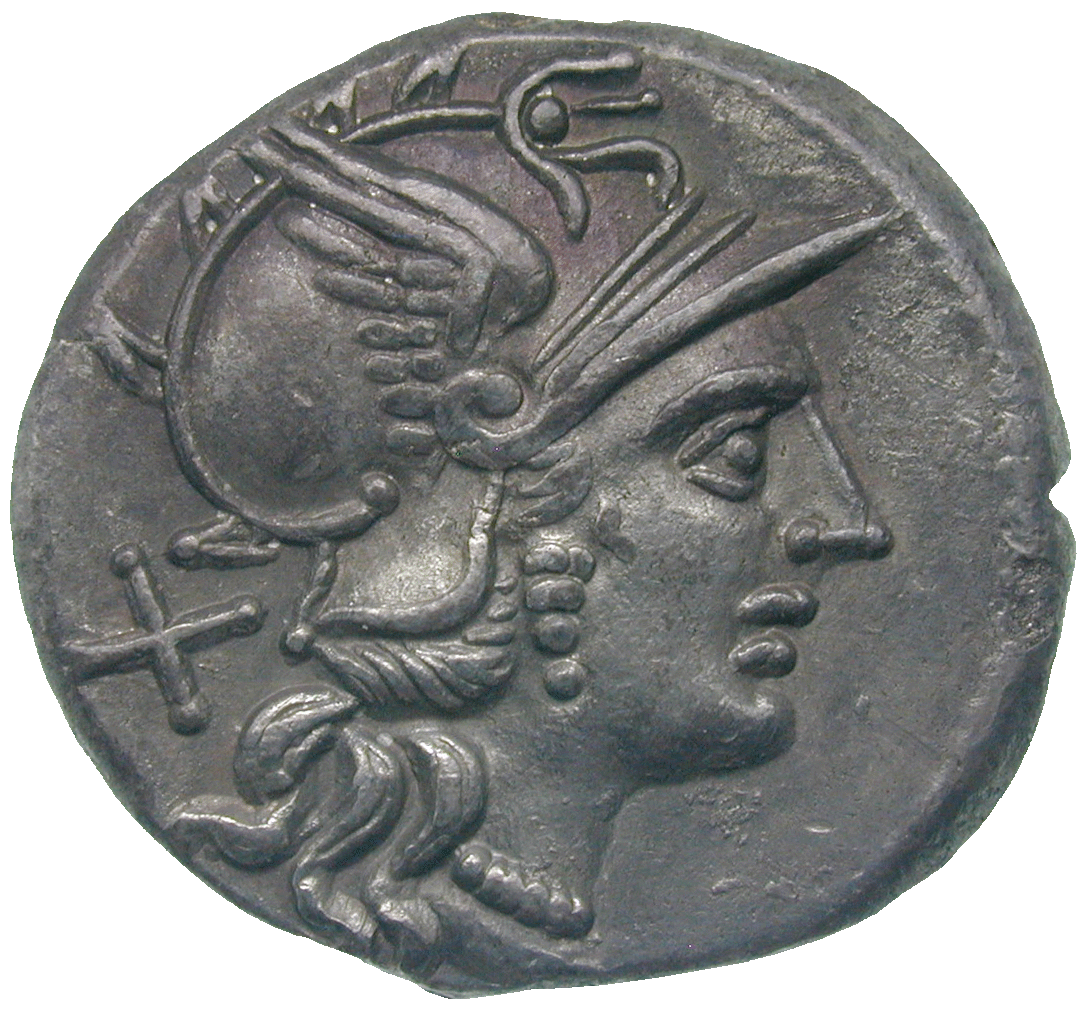Um die Mitte des 2. Jahrhunderts v. Chr. begannen die Darstellungen auf den römischen Denaren abwechslungsreicher zu werden. Bis dahin hatten sie auf der Vorderseite meist die Göttin Roma getragen, während die Rückseite fast immer die Dioskuren Castor und Pollux oder die Göttinnen Luna oder Viktoria in einer Biga zeigten. Die Münzmeister, die für die Ausgabe der Münzen verantwortlichen Beamten, hatten sich durch Symbole oder Monogramme auf den Münzen identifiziert.
Um 140 v. Chr. jedoch begannen die Münzmeister, die Rückseiten der Denare mit Darstellungen zu versehen, die in direktem Zusammenhang mit ihrer Familiengeschichte standen. Dieser Denar ist eines der ersten Exemplare dieses Trends. Seine Rückseite trägt eine Biga, einen zweispännigen Rennwagen, der von der Göttin Juno gelenkt wird. Gezogen wird der Wagen allerdings nicht von Pferden, sondern von Ziegen.
Als Weidegöttin Juno Caprotina – der Name bedeutet 'mit Ziegenfell bekleidet' – war Juno für Kleinvieh in Gestalt von Ziegen verantwortlich. Dieser Kult war vor allem in Lanuvium populär, einer Stadt in Latium. Von dort stammte wohl die Gens Renia, die Familie jenes Münzmeisters, der für die Ausgabe dieses Denars verantwortlich war: er hat das Kürzel seines Namens, C. RENI, auf die Rückseite der Münze gesetzt.

